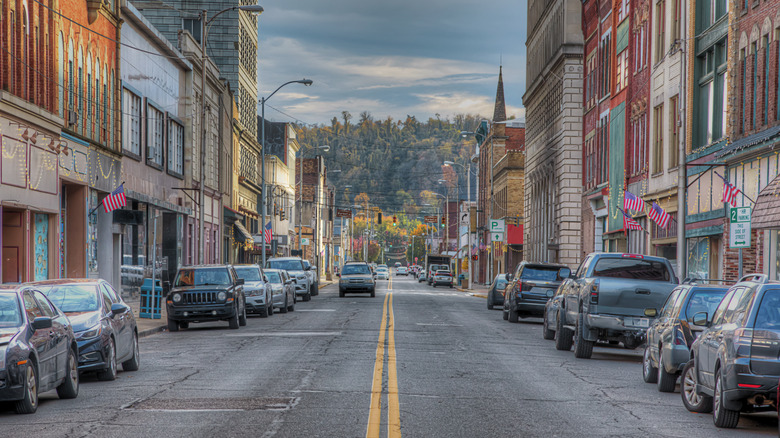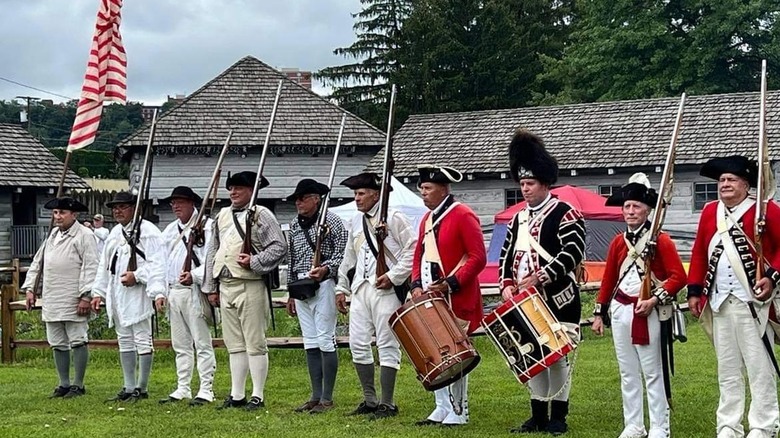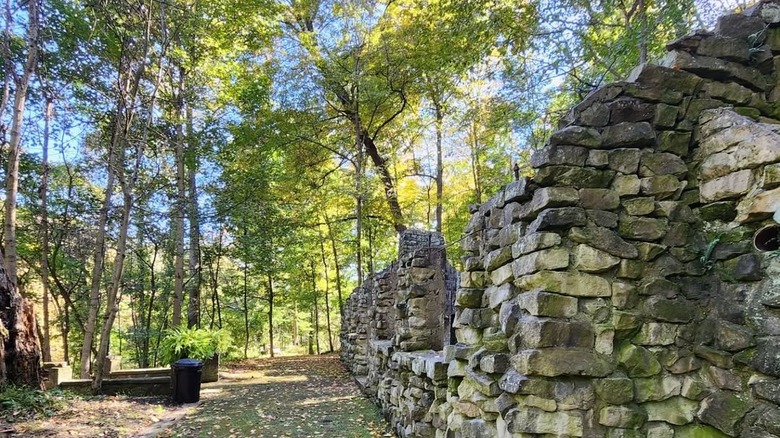Ohio's Charming River Town Is A Hidden Gem With Trails, Frontier Reenactments, And Massive Murals
At first glance, Steubenville seems like a typical Ohio Valley mill town. Located on the Ohio River, just over the border from West Virginia and about 30 miles west of Pittsburgh, it was a hub for steel production for over a century, home to two blast furnaces that provided raw steel to the region's many mills and plants. But there's much more to Steubenville today than its industrial past. Similar to other Ohio River destinations like the charming and colorful town of Portsmouth, Steubenville's green spaces, history, and arts scene give it a lot to offer visitors.
The best way to start your exploration of Steubenville is with a walking tour through its downtown. Along the way, you'll see why it's known as the City of Murals. The 24 murals adorning Steubenville's buildings celebrate various aspects of the town's history and culture, from the Lewis and Clark expedition through the steel industry and World War II. Among them are two murals paying homage to musicians born in Steubenville: Dorothy Sloop, who inspired "Hang On Sloopy" (Ohio's official rock song), and Dean Martin of Rat Pack fame, who also has a street named after him and an annual festival in his honor every June.
The Steubenville Visitor's Center offers maps of the mural locations, so you can make sure to see them all. It's also a great place to get info on the town's other attractions, whether you're looking for historic sites like the First Federal Land Office west of the Alleghenies or info on events like the holiday Nutcracker Village and Fort Steuben summer concert series.
Get up close with frontier history at Fort Steuben
Ohio is chock full of military history, like the world's largest military aviation museum in Dayton, or the Confederate POW camp and cemetery near this scenic Ohio village of Marblehead. Steubenville earns a place on any military history buff's Ohio itinerary thanks to the historic Fort Steuben. Named for Revolutionary War drillmaster Friedrich Wilhelm von Steuben, it was built to protect surveyors who were preparing the Northwestern territory for settlers — though it didn't serve that purpose long. Construction started in 1786, and by 1790, it had been destroyed by a fire. By the time the Lewis and Clark expedition passed through in 1803, the town of Steubenville was thriving, but the fort was long gone.
Historic Fort Steuben, as it exists today, is a reconstruction that was started in 1986, on the 200th anniversary of the fort's initial construction. The fort is open to tour between May and October (though the visitor center and museum stay open year-round). The best time to visit is the first weekend in June. This is when they hold the annual Frontier Days, when reenactors set up camp in the eight-building complex of the reconstructed fort, giving visitors a taste of what life would have been like in the early frontier days.
Since it was first built to protect surveyors, it's fitting that Fort Steuben today is home to the Museum of Surveying, the only museum dedicated to land surveying in the United States. The site has also been an active archaeological excavation since 1978, and many of the artifacts that have been unearthed are displayed at the Exhibit Hall in the fort's Visitor Center.
Historic parks and outdoor recreation in Steubenville
While Fort Steuben is a reconstruction, other historic sites in Steubenville have been around since their founding. The most noteworthy are the adjacent Union Cemetery and Beatty Park, which combine history with popular hiking trails. Union Cemetery was established in 1854 and expanded over the next half-century into a sprawling 220-acre grounds. A veteran's section was established during the Civil War, where the Soldiers and Sailors Monument, erected in 1870, can be seen today, along with veterans' graves spanning from the Revolutionary War through World War I. In 1930, a 99-acre tract was split off and became Beatty Park.
The greenery in Union Cemetery is as impressive as its monuments. Many of its trees predate the cemetery, and it's known for its flowering shrubs, especially the hydrangeas (visit in autumn to see them in full bloom). For a longer stroll, pick up McCook Walk next to Hydrangea Park. The trail started as a favorite walking route for one of the 'Fighting McCooks,' a local family known for their military service, whose main plot is also along the trail. It extends into Beatty Park, where it becomes the main Beatty Park trail. This well-maintained 1.7-mile loop goes past more historic ruins and is the easiest and most accessible of Beatty Park's four trails.
The north side of Steubenville also offers spots to enjoy the outdoors. The largest, Belleview Park, offers a range of recreation with a pool, ballfields, and courts for basketball and tennis. It's located next to the Steubenville Marina, a stretch of public waterfront with boat launches, fishing spots, and views of the cable-stayed Veterans Memorial Bridge.


